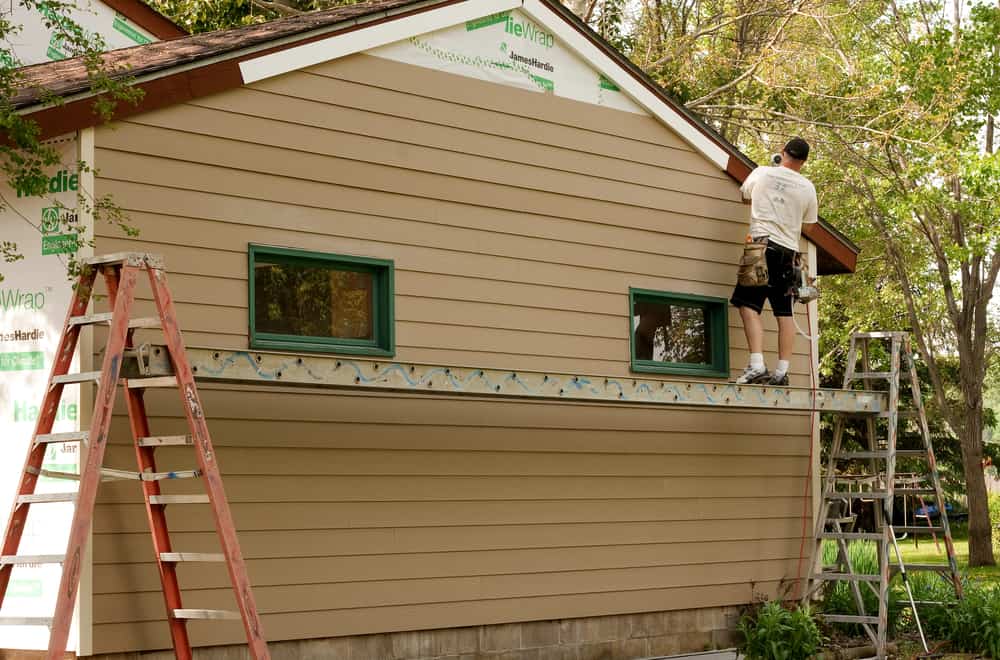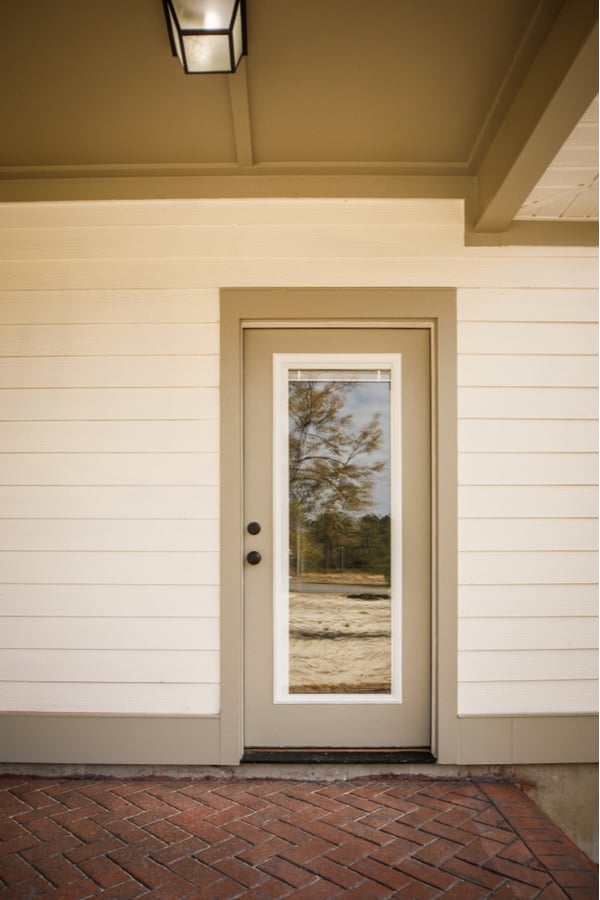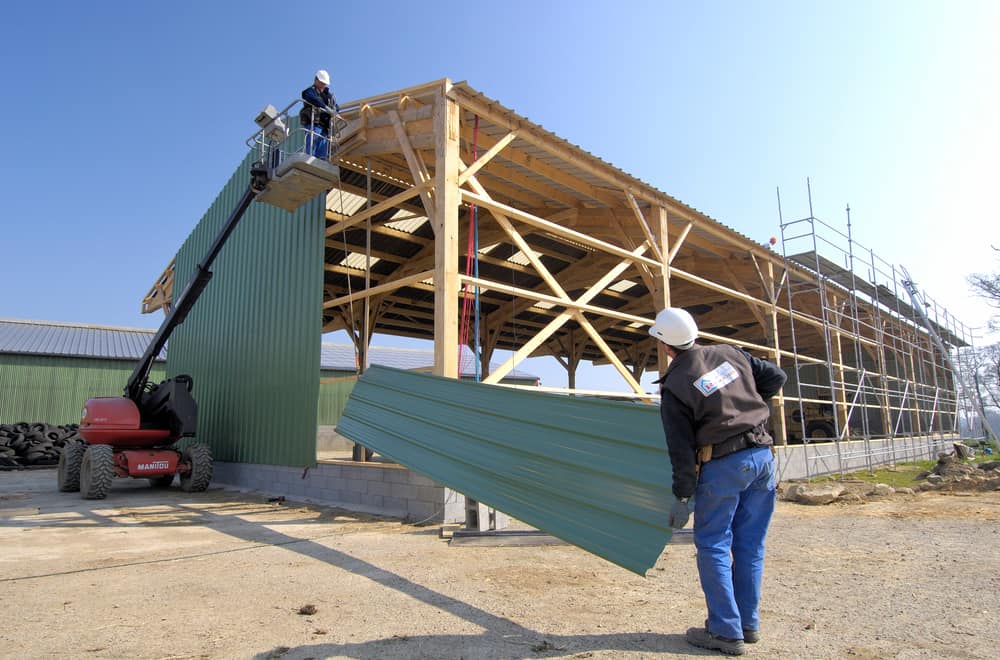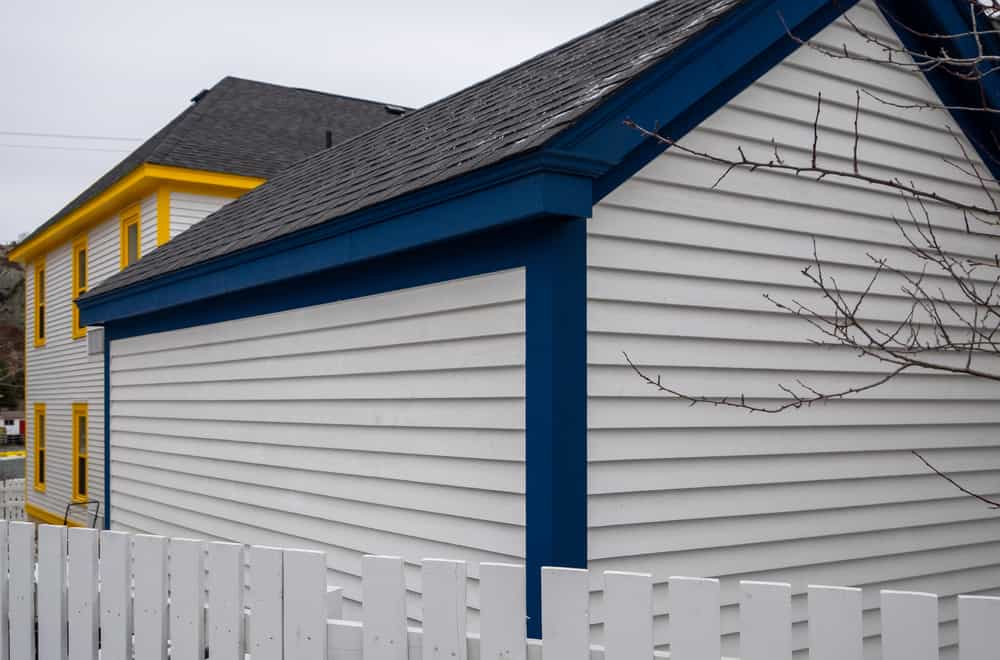When planning their exterior, most homeowners want to know how much does Hardie board siding cost. This is a popular solution for homes giving them a fresh look and additional weather protection.
The price of a replacement varies significantly based on several factors. If you wish to commit to this material, make sure to inquire ahead of time. That way, you will be able to assess the future costs of repairs.
Table of Contents
Installing Hardie board siding
Like any other siding, Hardie boards can have a major impact on the visual appearance of your house. What’s even more important, this is a relatively cheap solution compared to alternatives. Hardie board siding is occasionally called cement siding.
Often, homeowners rely on Hardie board as an alternative to some other, pricier materials. You can utilize it instead of wooden shakes and shingles, clapboard, or natural stone siding. Although Hardie board is not always the best solution esthetically, it is a great way to save money while getting a siding of high durability.
Construction and design experts consider siding a great mid-size remodeling investment. If you wish to resell your home, Hardie board siding can provide an 85% return on investment. Alternatively, if you wish to use the home for yourself, the siding can protect the exterior of your home, and increase the overall energy efficiency.
The main benefits of Hardie board siding
If you maintain it properly, Hardie board siding can last as long as your house. Even better, maintaining this type of siding is not that hard due to its low repair cost. You can choose between various colors and designs, which will allow you to find just the right product to fit the home’s exterior.
On average, the installation of Hardie board siding will cost around $10. This can be a bit higher compared to some other materials. However, if we consider the fact that the Hardie board can last for such a long time, it is a more than warranted investment.
Here are the main benefits of installing Hardie board siding:
- Hardie boards have high wind and water resistance making them ideal for regions with a harsh climate. Even if your area has strong winds and frequent hails, this type of cover should provide great protection and is unlikely to sustain damage.
- Besides durability, life expectancy is the main reason why you should consider buying it. If installed properly, the cover should remain in place for up to 50 years. In most cases, Hardie board siding comes with a limited transferable warranty. The material is resistant to rot and pests, and can even endure salt spray (common for coastal houses).
- Given that the Hardie board consists of 90% cement and sand, it is really great against fire. A homeowner might even get an insurance discount when installing these exterior covers.
- Although the Hardie board is not as esthetically pleasing as natural materials, it is often hard to tell the difference. Due to a wide variety of textures and colors, you can easily replicate the appearance of cedar shingles, wood lap boards, and wood shake sidings. Like all sidings, the Hardie board’s color will fade with time. However, you can still get a 15-year warranty on the finish.
The main drawbacks of Hardie board siding
Although the Hardie board seems like an ideal solution, it does have a few drawbacks that might sway you towards other materials. In particular, a homeowner should think about its high weight and cost.
These two factors affect each other. Due to the fact that the boards are so heavy, the installation will also be a bit steeper compared to other materials. Material meant to cover 100 square feet of the surface will weigh around 300 pounds. As such, installing Hardie boards is an impossible project for DIY enthusiasts. By comparison, the same quantity of vinyl siding will weigh 60 pounds.
When installing Hardie board siding, you will need a team of experienced professionals. Having some expertise is especially important when covering the upper areas of the house. Given that the material is so heavy, the transportation and other associated costs will also be higher.
Besides paying for extra labor, a contractor should rent or buy additional equipment to handle Hardie boards. For example, they might need lifts and other tools that would allow them to place Hardie boards on upper sections of the house.
Although Hardie boards can be utilized in various ways, they are still not as impressive as wood and stone. While this is a minor difference for some, other people will not even consider Hardie boards for this specific reason.
The average cost of Hardie board siding
You should expect to pay somewhere between $7 to $13 per square foot of Hardie board siding. Keep in mind that this includes installation as well as the material.
This price is a bit higher than most other siding materials, but it isn’t the priciest solution. For example, quality cypress siding can be much more expensive. The same goes for wood and steel. Although the material is the biggest factor, a homeowner should also consider accessibility, location of the house, and the overall complexity of the job when assessing the potential cost of the project.
If you already have siding, you will also have to include the price of removal. Taking of current covers will be somewhere between $1,000 to $2,500. The price can vary significantly based on the surface of the outer walls and the material that was utilized.
Most people want to check the average cost of Hardie board siding, not only so they can predict the future costs, but also to see how the material stacks compared to other solutions. Here are the common options, and how much they’ll cost you per 1,000 feet:
| Material | Cost per square foot | Cost for 1,000 square feet |
| Hardie board siding | $7 to $13 | $7,000 to $13,000 |
| Vinyl siding | $2.5 to $5.5 | $2,500 to $5,500 |
| Cedar wood siding | $6 to $15 | $6,000 to $15,000 |
| Engineered wood siding | $6.5 to $11 | $6,500 to $11,000 |
| Aluminum siding | $2.75 to $4.5 | $2,750 to $4,000 |
| Fiber cement siding | $4.5 to $9 | $4,500 to $9,000 |
| Stucco | $7.5 to $11.5 | $7,500 to $11,500 |
| Stone veneer | $15 to $30 | $15,000 to $30,000 |
Assessing the cost of material
Although we suggest against it, you can also install Hardie siding yourself.
The material will cost somewhere between $3.5 to $4.5 per square foot. Besides the boards, the price includes nails, house wrap, trim, and other crucial materials. When calculating the cost of material, you will need to focus on the exposure. This refers to the area that is visible to the naked eye.
When you buy Hardie boards, you can choose between 4”, 5”, 6”, and 7” wide clap board exposure. In other words, the separation between rows will be anywhere from 4 to 7 inches. Most homeowners choose 4” and 5” options. These ones are regarded as premium products, and manufacturers charge them extra.
If you choose boards with a larger exposure, you can save some money. This comes not only because wide siding is cheaper, but also because you will pay for less material.
As funny as it sounds, contractors will charge extra for wider exposure even though this doesn’t make sense financially. It is a common contradiction, and we suggest that you try and negotiate the price before starting a project.
Additional modifications, such as repainting the siding, will cost you a bit more. However, nobody does this because factories have a wide selection of colors, and you likely won’t have to make any major adjustments once you purchase the material.
Besides this material, more and more homeowners choose wraps for their siding. They are a great way to reduce environmental impact, and they provide amazing water and air barrier to your exterior. By having such amazing insulation, you will be able to significantly reduce your monthly heat and electricity bills.
How to maintain Hardie board siding?
Besides performing regular maintenance, there are a lot of things you can do to increase the life expectancy of Hardie board siding. These are common processes that you will do anyway. Here are some of the things you can do:
- Regularly cleaning gutters, and removing any blockage.
- Washing Hardie board siding once in 6 to 12 months. You can use a water pray with low pressure or a regular garden hose. This is a great way to remove the debris that accumulates over time.
- Take mild detergent to remove stains and dirt from panels.
- As soon as you notice that the caulking is starting to deteriorate, make sure to reapply a new layer. Moisture often penetrates the caulk leading to the appearance of mold. While Hardie boards are resilient to insects and humidity, the issue can be caused by faulty sealants.
- Bushes, trees, and other vegetation can cause all sorts of issues. Big trees are especially troublesome during heavy storms as they will start beating against siding causing permanent damage.
You can perform all these things during your regular roof checkup. The maintenance doesn’t take that much time and, if there is no damage to the surface of the siding, you can do these fixes yourself thus saving money on contractors.



